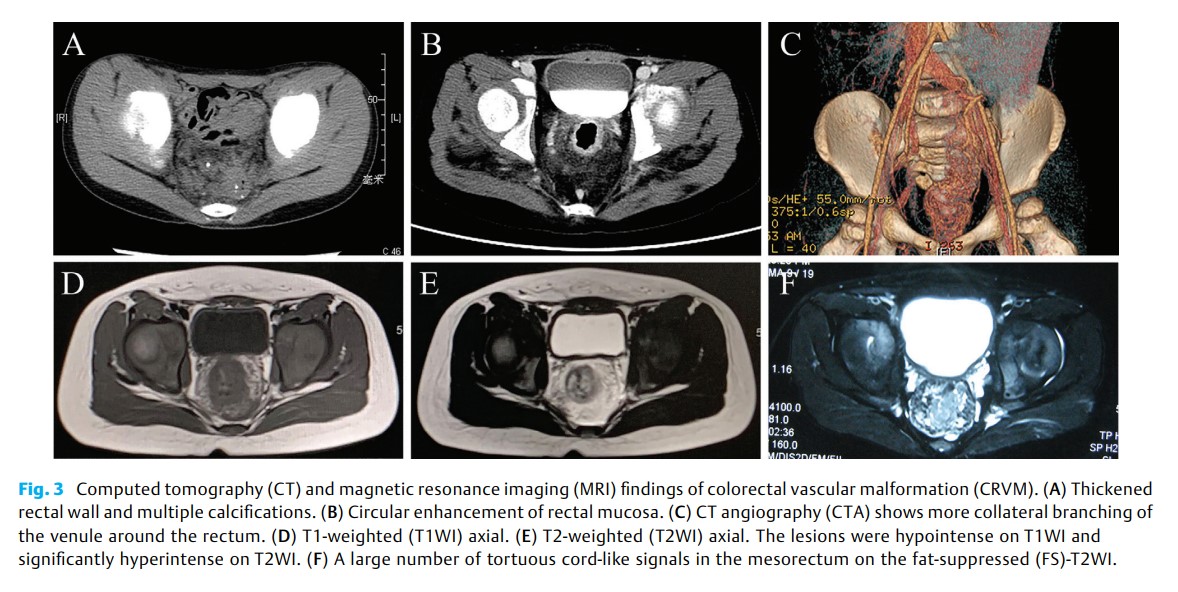
Read the eFirst article in the
European Journal of Pediatric Surgery
Original Article
Yanbing Huang, Peijun Zhuang, Gong Chen, Yanlei Huang, Kuiran Dong, Xianmin Xiao, Shan Zheng, Song Sun
复旦大学附属儿科医院
Introduction The objective of this study is to summarize the clinical characteristics and management of rare diseases of colorectal vascular malformation (CRVM) in children.
Methods We retrospectively analyzed the clinical data of CRVM patients admitted to the Children's Hospital of Fudan University from 2004 to 2019.
Results A total of 23 cases (16 males, 7 females) were enrolled. The median age of symptom onset was 1.4 years. Hematochezia and anemia were cardinal symptoms. Fourteen patients (60.9%) were misdiagnosed as anal fissures (n = 4), internal hemorrhoids (n = 3), rectal polyps (n = 2), inflammatory bowel disease (n = 2), portal hypertension (n = 2), and Meckel's diverticulum (n = 1), respectively. The average time from symptom onset to diagnosis was 4.5 ± 4.4 years. Other vascular malformations were detected in eight patients (34.8%). All patients showed a positive anomalous vascular image on contrast-enhanced computed tomography (CT) or magnetic resonance imaging (MRI). The sensitivity of colonoscopy in the diagnosis of CRVM was 82.6% (19/23). A total of 21 patients underwent a modified Soave procedure. The lesions were mostly restricted to the colorectum and showed transmural diffuse distribution, with an average length of 20 ± 5.4 cm. Two patients (9.5%) experienced surgical complications. Bloody stools reappeared in two patients (9.5%), and colonoscopy showed abnormal angiogenesis at the anastomotic site, which were cured by sclerotherapy and/or electrocautery. The median follow-up time was 78 months. Bloody stools were absent at the last time of follow-up, and hemoglobin was in the normal range for all patients.
Conclusion The identification of CRVM in children often is delayed. Colonoscopy, CT, and MRI are essential in making the correct diagnosis. The modified Soave procedure is safe and feasible to treat CRVM in children. Endoscopic sclerotherapy and/or electrocautery can be used for residual lesions.

